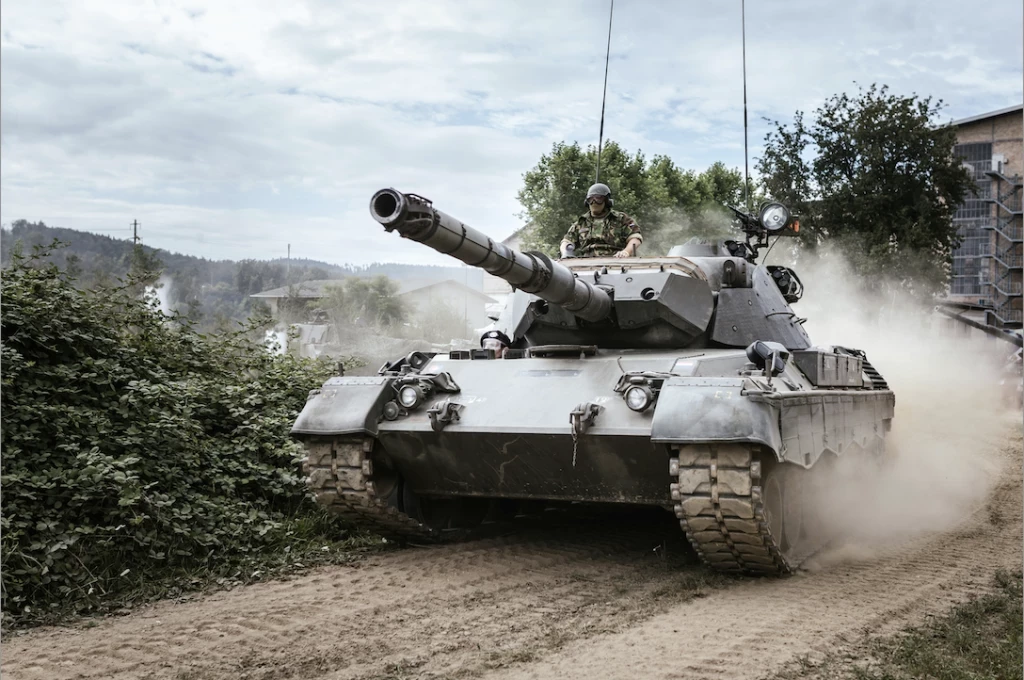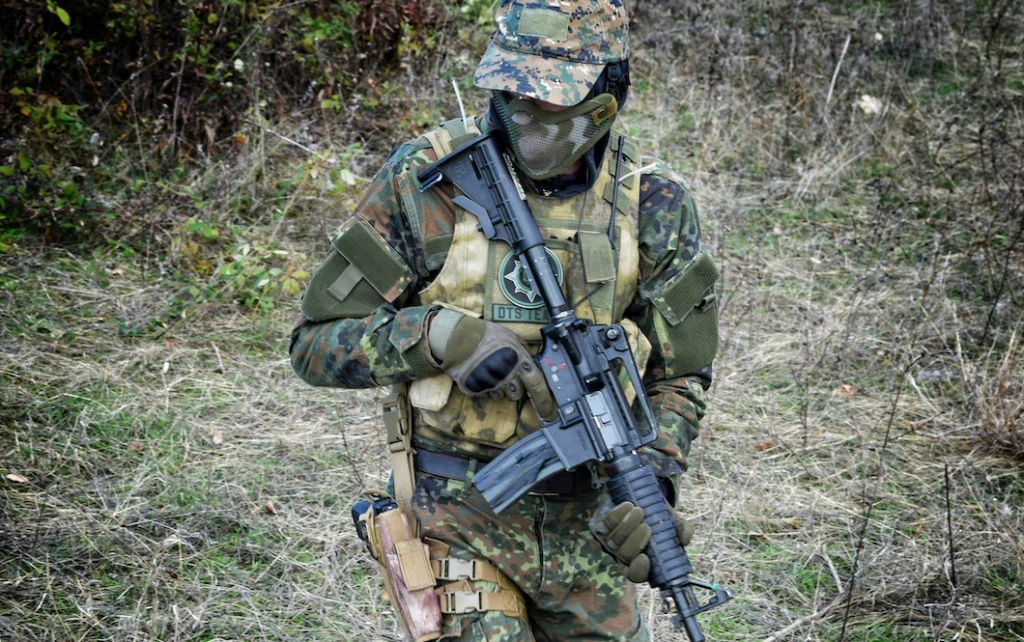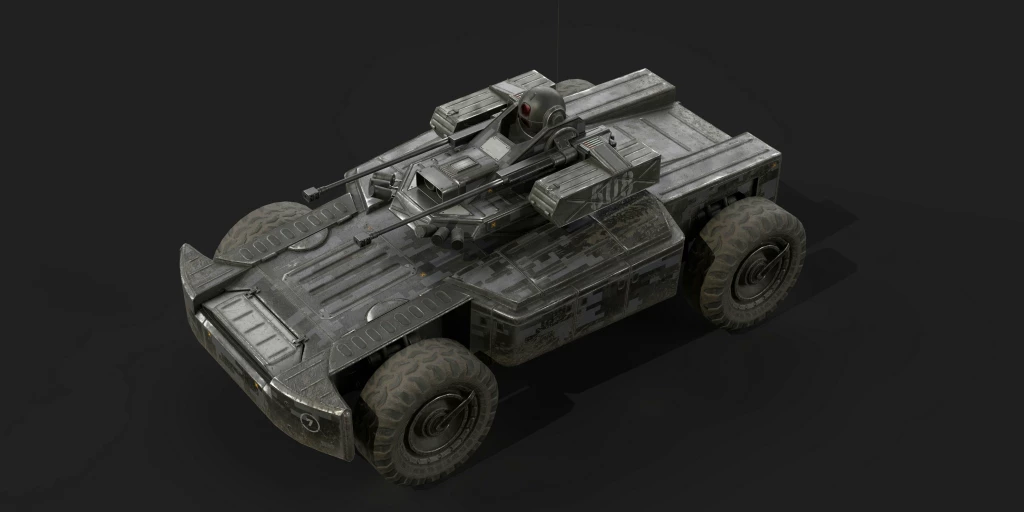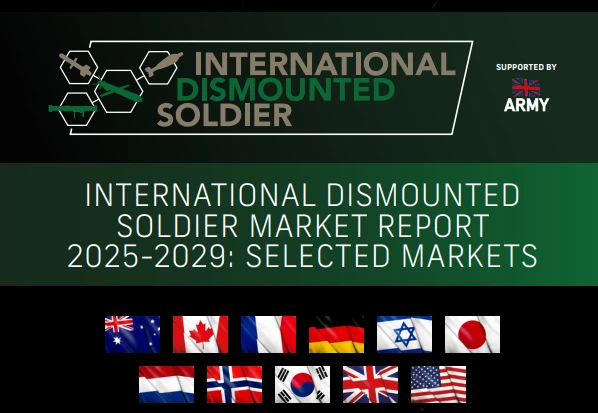Chinese Military Capability Demands in the Next 20 Years
Add bookmarkResearcher Daniel Urchick puts himself into the shoes of China and assesses what the country will be looking to achieve in terms of military modernization in the coming years – and why.
The views and opinions in this article are solely those of the author and do not necessarily reflect or represent those of Defence IQ.
––––––––––––––––––––––––––––––
Executive Summary
Traditional security concerns continue to dominate China’s national security thought. However, the People’s Republic of China will increasingly need a military capable of carrying out a wide range of missions not exclusive to traditional land warfare over the next 20 years. In this regard, the invasion of Taiwan remains the chief strategic direction. The most important military capabilities the People’s Liberation Army will seek to accomplish in its future missions include: effective amphibious, airborne, and air assault capabilities, high capacity air and sea lift logistical capabilities, naval power projection, modern C4ISR capabilities, the capability to conduct cyberwarfare during a real-time conflict, and a modern credible nuclear deterrent.
Introduction
For millennia, Chinese dynasties remained insularly focused. China was the center of the universe and its ponderous military struggled to tame the nomadic tribes that came to wreak havoc from the Western Steppes. The Chinese military would remain continental in capability and driven by sheer manpower until well into the modern era. Today the People’s Republic of China (PRC) and its ruling Chinese Communist Party (CCP) face new challenges on their non-immediate borders. China has emerged from what it calls its “100 years of humiliation” as a rising global power with global security concerns. The PRC’s modern threat perception and national security perspectives have given the People’s Liberation Army (PLA) an entirely new set of missions that would have seemed inconceivable as recently as 50 years ago. So long as China remains a land power, its military forces will need to evolve their capabilities to meet new needs and ensure the continued rejuvenation of the Chinese dream.[i]
[inlinead]
Missions
China’s May 2015 national security strategy clearly lays out the missions or “strategic tasks” the CCP expects the PLA to be able to handle in the next 20 plus years. These tasks fall across a broad spectrum of operations from true combat to military operations other than war (MOOTW). The list is comprised of, but likely not limited to, the following responsibilities:
1) To resolutely safeguard the unification of the motherland
2) To safeguard China's security and interests in new domains
3) To safeguard the security of China's overseas interests
4) To maintain strategic deterrence and carry out nuclear counterattack
5) To participate in regional and international security cooperation and maintain regional and world peace
6) To strengthen efforts in operations against infiltration, separatism and terrorism so as to maintain China's political security and social stability; and
7) To perform such tasks as emergency rescue and disaster relief, rights and interests protection, guard duties, and support for national economic and social development.[ii]
These missions clearly reflect the diversified and global range of interests of China as a “rising power.” In 2004, then-president of China Hu Jintao revealed the “new historic mission” concept that set the precedent for many of the PLA’s current modernization efforts.[iii] Many of the new historic missions are not capable of being fulfilled using the cumbersome land-based soviet model military the PLA has followed for the past 60 years.
The mission set expected of the PLA is complex and difficult to carry out, even for an established global power like the United States. Numerous publications have attempted to delve in to these missions and parse out the capabilities needed for each one. China, as a late entrant to the global power stage, faces high entry-cost barriers, regardless of the mission’s nature. Unlike the United States, who was able to gradually develop its capabilities in phases, China must comparatively ‘jump’ from inventing the wheel to space flight almost instantly.
Capabilities
Tactical Troop Movement: The PLA needs to enhance its ability to rapidly move large numbers of troops from the mainland to Taiwan in an invasion scenario. These capabilities include amphibious lift, airborne operations, and air assault capabilities. All three categories need to be strengthened significantly. The PLA has suffered from inadequate indigenous military-industrial production capability to solve these problems and has only been further hindered by the continuation of the 1989 arms embargo placed upon it by the West. The PLA and the PLA Navy (PLAN) currently lack enough amphibious assets to ferry the estimated 375,000 troops necessary for a sea landing on Taiwan. The geography of Taiwan has reduced the effectiveness of deep-hull landing ships and forced the PLA and PLAN to rely more heavily on hovercrafts to move troops. With only four large hovercraft vessels currently operational, although more are planned, the amphibious capability is a long way from being truly capable. The PLA and PLAN can further remedy this problem by continuing expansion efforts of their assault ship capacity. China has built three large YuZhao (Type 071) class amphibious transport docks that can carry smaller hovercraft allowing them to deploy from farther out to sea.[iv] Once again, the small quantity limits their usefulness in large-scale operations. A larger indigenous production capacity of modern assault ships and hovercraft is needed for the PLA and PLAN to successfully carry out a seaborne invasion.
Training Capabilities: Training for amphibious- and air-assault operations has long been another limitation for those capabilities. In fact, training for most of the new historic missions expected of the PLA is lacking.[v] Most exercises simulating these operations do not have a realistic setting in terms of weather and nighttime elements. That said, in its May 2015 iteration of China’s national security strategy, the PLA did commit to resolving this issue. While China has begun to address specific mission-type training deficiencies, numerous other training challenges remain that degrade the PLA’s ability to carry out important missions. Training deficiencies have even been noted in the Second Artillery Force, China’s nuclear assets.[vi] The PLA still lacks the capability to conduct joint-force operations like most modern militaries. This was a structural problem until the recent organization of the PLA into five theater commands. Now, the PLA must begin to train in joint-combat operations. This capability very well could take more than the 20-year scope of this analysis. Soviet-style organization is deeply ingrained in the PLA; it has even admitted in its own publications that many people in PLA leadership positions are resistant to change.[vii] Regardless of the challenges, the PLA will need to quickly internalize and become proficient in joint-combat operations in order to effectively engage in war against any modern military.
Strategic Lift: Long-range strategic (heavy) air and sea lift capabilities are also important for China to be able to fulfill many of its required missions in the next 20 years. An occupation of Taiwan will require a constant flow of supplies and reinforcements. The PLA must also be able to quickly shift some level of sustainable combat power to the African continent in order to protect its new overseas interests. The PLA currently lacks the ability to quickly move manpower and material by air like the United States does. Attempts have been made to rectify this through purchases of the Russian Il-76 transport aircraft and the indigenous production of the Il-76 derivative Y-20 military cargo plane.[viii] Until enough cargo planes are brought online, China’s logistical, airborne, humanitarian assistance & disaster relief (HADR), and aerial refueling and reconnaissance capabilities will be hampered.[ix]
Forward Basing: The issues facing potential operations in Africa, and even in the Middle East, could be further alleviated by the establishment of credible forward-basing facilities in the region. Establishing a small naval-resupply base in Djibouti is an important first step for the PLA in the development of this capability; however, the facility is not large enough to sustain any meaningful continental operation and remains solely geared towards naval anti-piracy operations at this time. Within the next 20 years, this facility would have to be upgraded and expanded. Other forward-basing facilities would also likely need to be established. Iran and its inclusion into the Shanghai Cooperation Organization (SCO) offer China a potential avenue for regional basing on the SCO’s auspices. Iran would also be a favorable third-party basing location in regards to a paranoid India. These forward bases will greatly enhance the ability of the PLA to project power far away from the mainland. They will allow the PLA to rapidly carry out HADR and non-combatant evacuation operations (NEOs) in the region, while also allowing it to rapidly respond to conflicts with Chinese peacekeepers. Furthermore, forward basing can contribute significantly to the PLAN’s ability to conduct sea lanes of communication (SLOC) protection operations.[x]
Naval Capabilities: The quality of the PLAN has seen marked improvement in several arenas, but there are numerous capabilities that need continued development in order to ensure the military’s ability to carry out its full mission set. China’s newest and most stealthy destroyer assets lack the significant anti-air and anti-ballistic capabilities needed to protect a vital carrier task force from saturation attacks.[xi] Many of the PLAN’s ships are too small to carry large long range missile contingents and lack the power plant to fully utilize their long range radars.[xii] The PLAN also will need to enhance its anti-submarine warfare (ASW) capabilities. Once again this issue largely stems from poor or limited training and a lack of live operational experience. China has begun to address the hardware shortfall for ASW capabilities with the Y-8 maritime patrol aircraft. That said, aside from the Y-8, the PLAN does not have a large or modern ASW fleet. Both of the aforementioned capabilities are key in protecting large fleet groups, like those that are built around aircraft carriers. As China builds its power-projection abilities via aircraft carriers over the next 20 years, these proficiencies should be of first-tier importance to the PLAN.
In order for the PLA and PLAN to carry out many of its prescribed long-range missions, they need to develop an effective aircraft carrier group. These assets naturally have a power-projection competence that innately comes with them. The missions that would benefit from a carrier group include safeguarding the security of China's overseas interests, maintaining regional and world peace, and performing emergency rescue and disaster relief. Aircraft carrier groups are the pinnacle of modern navies, and China has worked diligently to build up the hardware needed for its own. The doctrine, training, and hardware needed to formulate a successful aircraft carrier based Navy represents staggering financial costs and time-consuming development over the next 20 years. These costs grow with each additional carrier group. Anti-air and anti-submarine operations are just two distinct naval capabilities needed to successfully operate a carrier group, which need to be strengthened. The PLAN will also need to build up its long-range sea logistical capabilities and networked surface defense capabilities if it wishes to move towards viably operating a carrier battle group in the next 20 years.
New Domains Capabilities: The potential of China’s cyber capabilities have already been well documented. The PLA will likely need to continue to expand and enhance these capabilities over the next 20 years to be able to effectively disrupt or neutralize the military command, control, and surveillance systems (C4ISR) of Taiwan and any external actor that may become involved in such a conflict. These systems range from digital communications to anti-air networks, radar systems, power grids, and other elements of command and control. Cyberwarfare is a double-edged sword, and the PLA must strengthen its own defenses to remain secure in the cyber realm. Multiple redundancies must be built into their C4ISR systems to eliminate the possibility of a single choke point node failing and halting operations.
The Military’s space-based capabilities will also increasingly need to be fortified. Spaced-based ISR and navigation through modern satellites is of primary importance to modern combat operations, both in the region and abroad where other ISR assets may not reach. Looking at conflicts with informationalized opponents, the military must also begin to develop credible anti-space countermeasures to neutralize or obstruct enemy space capabilities.[xiii]
C4ISR and Logistics: China’s C4ISR and logistic proficiencies must be improved upon, rather than simply made resilient to kinetic- and cyber-attacks. The PLA fully recognizes the revolution in military affairs (RMA) in regards to logistics and battle management, and will continue to seek full proficiency in the greater C4ISR arena. Many of China’s intelligence, surveillance, reconnaissance (ISR) and communication system technologies, however, remain dated or foreign in origin.[xiv] Modernized indigenous capabilities will help ensure the ability of the PLA to conduct a modern war. Over the next 20 years, the PLA must seek to build better integrated communications among different assets and its levels of command. Notably, China lacks the long-distance airborne surveillance capabilities to find, track, and fix incoming airborne threats in an engagement over Taiwan, or islands in the East or South China Seas.[xv] The lack of a robust land-based or naval-air ISR component significantly degrades the PLA’s other ISR assets, for instance its Aegis-version radars used to protect naval groups.[xvi] Without these modern capabilities, China’s ability to operate globally in a threat-laden environment is severely diminished.
Mid-air refueling is yet another logistical pitfall that needs to be address moving forward. Chinese air assets are capable of preforming mid-air refueling, but it is not a skill the PLAAF has mastered. Mastery of such logistical tasks is crucial against a technologically proficient adversary. Further compounding the issue, the PLAAF also lacks a significant number of air-refueling tankers for any sustained operation. These assets are crucial for helping air-superiority assets remain in a combat theater for extended periods of time, especially in distant locales like the edge of the South China Sea. As the South China Sea continues to roil over China’s island building campaign, the PLAA will likely build up its mid-air refueling ability. The PLAN also lacks robust replenishment competencies, with only five refueling ships.[xvii] This poor logistical capacity will hinder China’s ability to protect distant SLOCs and perform sustained combat operations outside of regional waters.
Nuclear and Conventional Missile Capabilities: Chinese defense planners and policy makers still consider other major powers the primary external threat to China. Nuclear weapons will always be the ultimate deterrent in any existential threat-based conflict. While many of the PLA’s future missions are not currently of this magnitude, a reliable nuclear deterrent is still a priority. In the next 20 years, the PLA, PLAN, and the Second Artillery Force (PLASAF) in charge of land nuclear assets need to strengthen their second-strike capabilities. For the PLAN, this is likely to be done through better nuclear ballistic submarine assets that are quieter and more survivable. Chinese nuclear ballistic missile technology will also need to increasingly incorporate MIRV technology and other advanced counter measures to keep pace with evolving ballistic missile defense (BMD) technology.[xviii] Chinese ICBM’s will constantly need to be improved to extend their ranges to meet challengers from farther across the globe.
The Chinese military already possesses one of the most lethal conventional ballistic missile inventories in the world. These missiles make up a core component of its area access/area denial (A2/AD) strategy, and are a core component of a saturation attack against Taiwan.[xix] As BMD technology improves in the next 20 years, these capabilities will need to be constantly improved upon and strengthened. Of specific importance are anti-ship missile capabilities. With the near-advent of direct energy weapon technology for protecting carrier groups, ballistic missiles may finally face a credible counter measure that will allow for foreign Navies to operate in China’s regional waters.
Image: Tomohiro Ohsumi/Bloomberg
Conclusion
China’s military represents a formidable threat while it is operating defensively in a regional setting. As commanders of a global power, Chinese political and military leaders recognize that China’s mission set extends beyond its immediate region, making new capabilities a necessity. Numerous current abilities must be strengthened as well in order to ensure that China’s new historic missions are successful. Many of the deficiencies Chinese leadership must address fall in the categories of power projection and logistics. In the next 20 years, the PLA must endeavor to build up its tactical invasion lift capabilities, such as amphibious lift and airborne, as well as strategic air/sea lift capabilities. As the PLAN’s aircraft carrier program comes online, the associated training and doctrinal challenges must be addressed. A modern military capable of conducting long-range, complex operations also must have a robust C4ISR system to support these operations. C4ISR hubs, tactics, and long range assets all must be improved. Finally, China must also continuously build up and modernize its strategic nuclear deterrent in order to maintain an existential threat deterrent. Many of the necessary enhancements are already in development, but it is important to recognize these needs going forward. Chinese military leadership is notoriously resistant to change and could easily waylay these advancements. As the aforementioned capabilities are created and/or significantly strengthened, the Chinese military will be able to accomplish its large and diverse mission profile with a large degree of potential success in the next 20 years.
Sources:
[i] The State Council Information Office of the People's Republic of China, “China’s Military Strategy,” May 2015, Beijing, China. Page 01.
[ii] The State Council Information Office of the People's Republic of China, “China’s Military Strategy,” May 2015, Beijing, China. Page 02
[iii] Michael S. Chase et al, “China’s Incomplete Military Transformation,” 2015, RAND Corporation, Santa Monica, California. Page 26.
[iv] Office of the Secretary of Defense, “Military and Security Developments Involving the People’s Republic of China 2015,” 2015, Washington DC. Page 10.
[v] Michael S. Chase et al, “China’s Incomplete Military Transformation,” 2015, RAND Corporation, Santa Monica, California. Page 72.
[vi] Michael S. Chase et al, “China’s Incomplete Military Transformation,” 2015, RAND Corporation, Santa Monica, California. Page 81.
[vii] Michael S. Chase et al, “China’s Incomplete Military Transformation,” 2015, RAND Corporation, Santa Monica, California. Page 76.
[viii] Office of the Secretary of Defense, “Military and Security Developments Involving the People’s Republic of China 2015,” 2015, Washington DC. Page 12.
[ix] Office of the Secretary of Defense, “Military and Security Developments Involving the People’s Republic of China 2015,” 2015, Washington DC. Page 13.
[x] Michael S. Chase et al, “China’s Incomplete Military Transformation,” 2015, RAND Corporation, Santa Monica, California. Page 41.
[xi] Michael S. Chase et al, “China’s Incomplete Military Transformation,” 2015, RAND Corporation, Santa Monica, California. Page 90.
[xii] Michael S. Chase et al, “China’s Incomplete Military Transformation,” 2015, RAND Corporation, Santa Monica, California. Page 91.
[xiii] Office of the Secretary of Defense, “Military and Security Developments Involving the People’s Republic of China 2015,” 2015, Washington DC. Page 14.
[xiv] Michael S. Chase et al, “China’s Incomplete Military Transformation,” 2015, RAND Corporation, Santa Monica, California. Page 80.
[xv] Michael S. Chase et al, “China’s Incomplete Military Transformation,” 2015, RAND Corporation, Santa Monica, California. Page 40.
[xvi] Michael S. Chase et al, “China’s Incomplete Military Transformation,” 2015, RAND Corporation, Santa Monica, California. Page 91.
[xvii] Michael S. Chase et al, “China’s Incomplete Military Transformation,” 2015, RAND Corporation, Santa Monica, California. Page 93.
[xviii] Michael S. Chase et al, “China’s Incomplete Military Transformation,” 2015, RAND Corporation, Santa Monica, California. Page 36.
[xix] Office of the Secretary of Defense, “Military and Security Developments Involving the People’s Republic of China 2015,” 2015, Washington DC. Page 08.






















